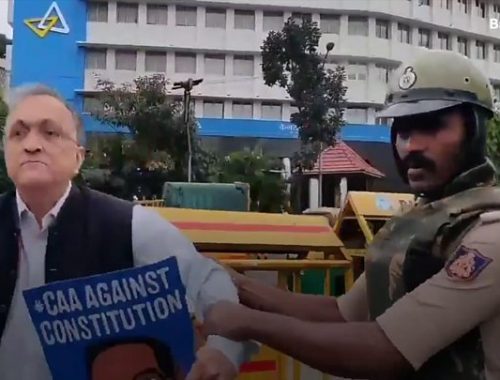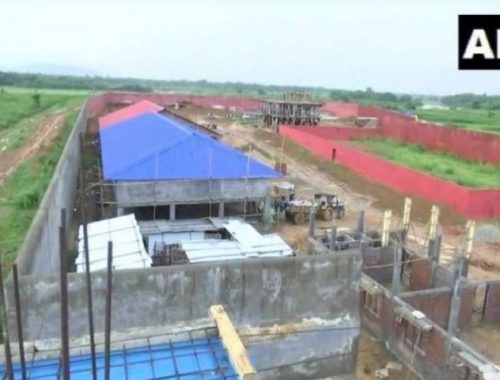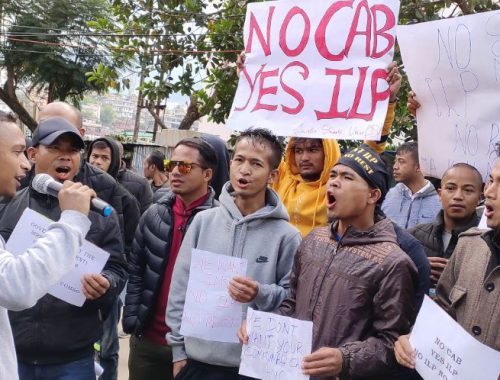The Modi government is introducing a new law to fight this rising problem, affecting many thousands of boys, women and girls every year
For years India has remained the “top destination” for human trafficking in South Asia, according to the United Nations Office on Organized Crime (UNODC). This is a major problem in South Asian countries because of their porous borders, it says.
South Asian children continue to be trafficked for multiple forms of sexual exploitation. The abuse includes prostitution, sex tourism, child pornography, pedophilia – and to get them to work in factories, agriculture, domestic servitude and begging, for forced marriage, adoption, military recruitment and debt release.
According to the National Crime Records Bureau (NCRB) figures, the state of Bihar ranked third just behind Rajasthan and West Bengal in 2017, when 362 boys and 33 girls below 18 years of age were rescued from the clutches of traffickers.
In February 2018, the Indian Cabinet chaired by Prime Minister Narendra Modi, approved the Trafficking in Persons (Prevention, Protection and Rehabilitation) Bill for introduction in the parliament. The bill, if passed, will lead to the creation of a national anti-trafficking bureau, to comply with a December 2015 Supreme Court order that an investigative agency be established to counter human trafficking. It will criminalize aggravated forms of trafficking with the intent of preventing this crime, and rescuing and rehabilitating victims.
The NCRB reported that in 2016 the government had identified 22,955 victims of trafficking – a significant increase from 8,281 victims the previous year. The NCRB said about half of the victims (11,212) were subjected to forced labor, while 7,570 were exploited in sex trafficking, 3,824 exploited in an unspecified manner, and 349 victims were subject to forced marriages.
But the government did not specify the age, gender or nationality of victims who suffered this exploitation. It included a small number of other crimes involving another 162 victims.
Boys most affected
The Indian government identified 8,651 boys, 7,238 women, 5,532 girls, and 1,696 men as trafficking victims. The great majority were Indian – 22,932 victims, while the other people affected were Sri Lankans (38), Nepalis (38), Bangladeshis (36) and 73 from a range of other countries, such as Thailand and Uzbekistan.
Most of the statistics and data on trafficking is gathered in relation to cases of cross-border trafficking of women for sexual exploitation. So, there is less information on the extent of trafficking linked to other purposes and trafficking of boys. In some countries, it is a custom or ritual to detain trafficked boys for some form of labor or pleasure.
Some boys from Bihar and Uttar Pradesh are subjected to forced labor in embroidery factories in Nepal, while Burmese Rohingya, Sri Lankan Tamil, and other refugee populations continue to be vulnerable to sex trafficking and forced labor in India, according to US State Department estimates.
People are mostly trafficked from countries like Nepal and Bangladesh, Indian officials say. Often refugees are targeted by local people. Victims of natural disasters are also targeted. Displaced Rohingya were at great risk of human trafficking from the border of Myanmar and Bangladesh, experts said.
The scope of information available on trafficking in different countries varies widely. Bangladesh, India and Nepal compile limited data, while the lack of data in Bhutan and the Maldives makes it difficult to analyze trafficking patterns in those countries, researchers said.
Human trafficking was last addressed at the South Asia Association for Regional Cooperation, but SAARC is often sidetracked due to disputes between India and Pakistan over Kashmir, or accusations that Pakistan has interfered in Afghanistan.
The SAARC Convention on Preventing and Combating Trafficking in Women and Children for Prostitution was held in 2002, but few changes have occurred in South Asian nations due to the lack of legislation or enforcement of anti-trafficking initiatives.
Men or boys are usually considered an invisible population as the traditional discourse on human trafficking does not usually take them into account. They are usually seen as predators or buyers of women, who are considered to be more vulnerable than young men. Lack of opportunities or little support from families are usually given as reasons that led to young men becoming victims of human-trafficking rackets.
Experts say speedy trials need to be implemented and legal authorities given adequate funds and training to break the cycle of trafficking and rehabilitate the survivors, so they can access prompt and proper care, such as psychological counseling. (Asia Times)




